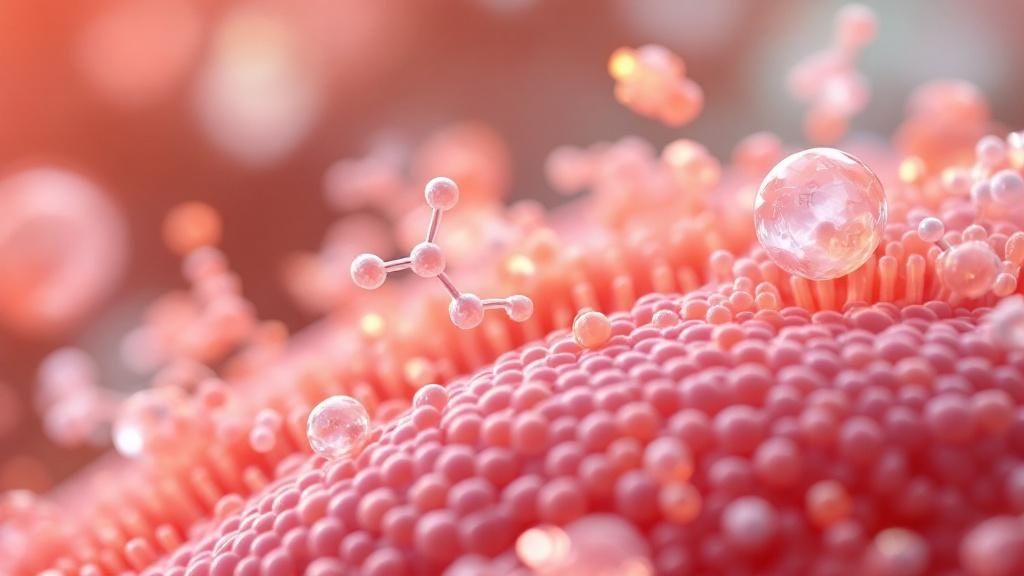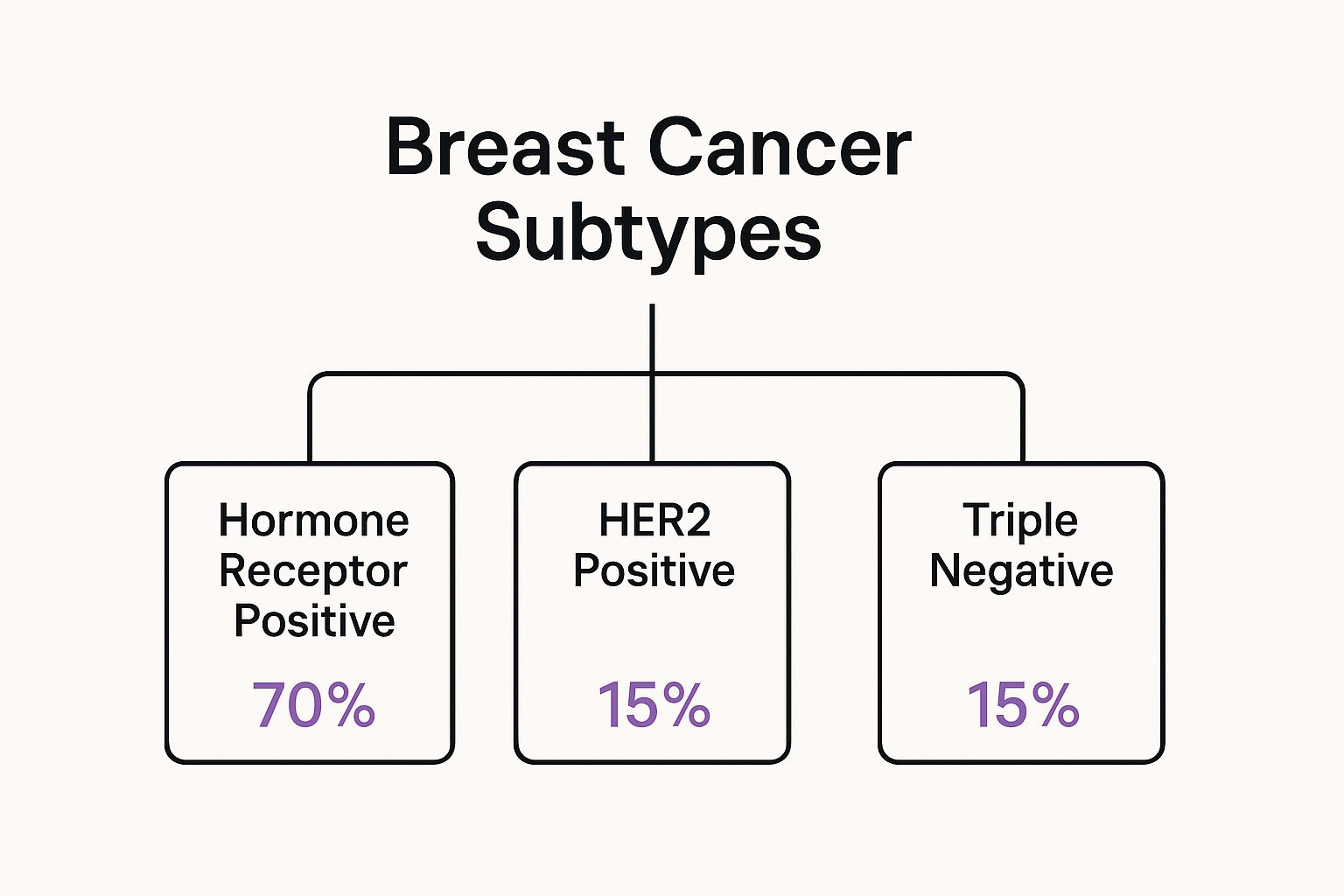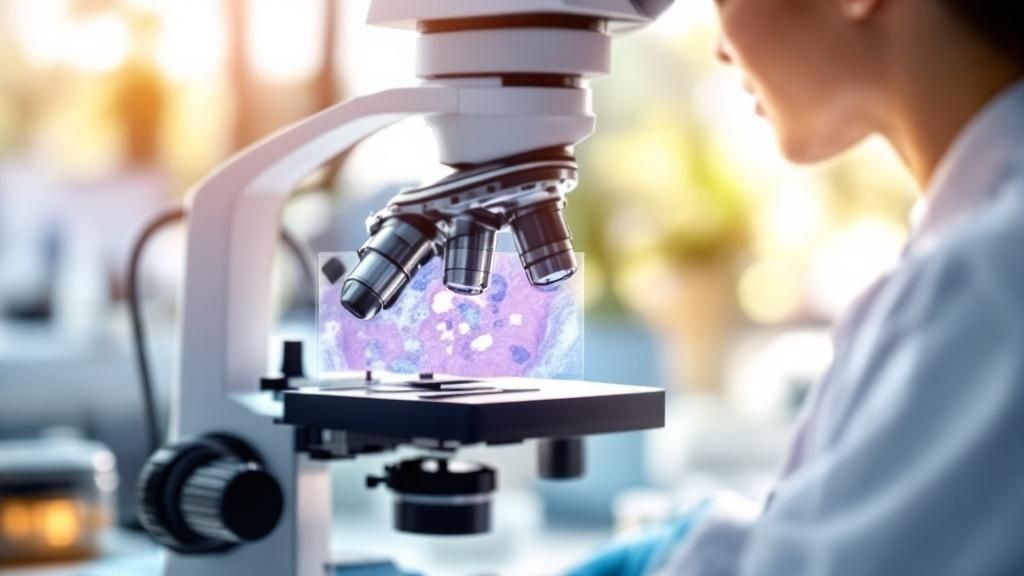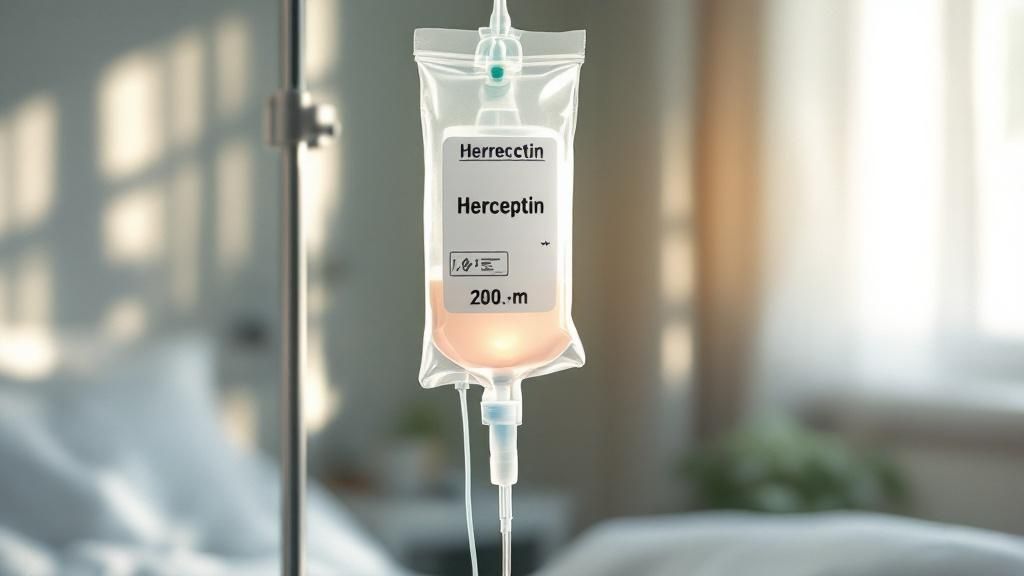Your Guide to ER PR HER2 Positive Breast Cancer
- Qudus Wix specialist
- Jul 29
- 16 min read
When your doctor says the words “ER/PR/HER2-positive breast cancer,” it can feel like you’ve been handed a foreign language to learn overnight. It’s overwhelming and confusing, but I want you to take a breath right here. This diagnosis is not just a label; it is a roadmap to a highly targeted and effective treatment plan.
In the simplest terms, this diagnosis means the cancer cells have three specific markers—think of them like tiny antennas—that give your doctors a very precise target. This label, often called triple-positive breast cancer, isn’t just a classification; it’s a detailed, personalized guide for your healing journey, filled with more hope than you might imagine right now.
Finding Hope With a Triple-Positive Diagnosis

Any breast cancer diagnosis is a moment that stops you in your tracks. When complicated terms like ER, PR, and HER2 are added to the mix, it’s completely natural for fear and confusion to wash over you. But in this space, I want you to see this diagnosis through a different lens: one of hope and empowerment.
Imagine the cancer cells are tiny ships. The Estrogen Receptor (ER), Progesterone Receptor (PR), and HER2 protein are like unique docking stations on the outside of those ships. For a time, these stations let hormones and growth signals fuel the cancer’s growth.
But today, medical science has developed highly effective therapies that act like "smart blockades," designed specifically for these docking stations. This means your medical team isn’t guessing. They have a well-defined and proven playbook to shut down the cancer's fuel supply and stop it in its tracks, which is an incredibly hopeful position to be in.
A Roadmap for Healing
The term “triple-positive” is your first sign that your treatment plan will be incredibly personalized. It’s confirmation that your cancer has vulnerabilities we know exactly how to target. This isn’t a battle against some unknown enemy; it’s a fight against a well-understood opponent with known weaknesses.
This knowledge is your power. It allows you to have more informed, confident conversations with your healthcare team and to truly understand the "why" behind your treatment. You’re not just a passive patient; you’re an active, empowered participant in your healing.
This specificity is one of the greatest triumphs of modern breast cancer research. Having three distinct targets gives your oncologists a powerful, multi-pronged strategy to fight for your health, significantly improving outcomes and offering profound hope.
Embracing Your Journey with Support
As you step into this journey, please remember that you are so much more than your diagnosis. Your path will involve managing treatments and their side effects, yes, but it’s also an opportunity for deep self-care. Focusing on your nutrition, gentle movement, and emotional well-being can make a world of difference in your day-to-day life. For more on this, check out our guide to thriving with cancer wellness.
This is the start of a new chapter—one defined not by fear, but by resilience, knowledge, and the incredible hope that a targeted diagnosis like ER/PR/HER2-positive offers. You are stepping onto a path that many women have walked before, a path lit by scientific breakthroughs and incredible stories of survival. You have every reason to be hopeful.
When you first hear a string of letters like ER, PR, and HER2, it's easy to feel like your head is spinning. It’s a lot of medical jargon, and it can feel cold and confusing right when you need clarity and comfort the most. So, let’s break down this alphabet soup into something that actually makes sense for you and your path forward.
Think of your pathology report less like a scary, formal document and more like a personalized instruction manual for your health. Understanding what ER PR HER2 positive means is the first step toward seeing just how precise and targeted your treatment can be. You're about to become an expert in you.
Decoding Your Triple-Positive Diagnosis
To make this feel a little less like a science lesson, here’s a quick guide to what each of these receptors means for your cancer and, more importantly, for your treatment plan.
Seeing it laid out like this helps to show that a triple-positive diagnosis isn't just one big problem; it's three very specific targets that your oncology team knows exactly how to go after.
ER and PR: The Hormone Receptors
Let's start with ER (Estrogen Receptor) and PR (Progesterone Receptor). These receptors are a key characteristic of hormone-positive breast cancer. The easiest way to think about them is as "on switches" located on the surface of some breast cancer cells. When the natural hormones floating around in your body—estrogen and progesterone—connect with these receptors, they flip the switch, signaling the cell to grow and divide.
If your diagnosis is ER-positive and PR-positive, it simply means your cancer cells have these particular switches. While that might sound a little scary at first, it's actually a very good thing. Why? Because we know exactly what's fueling the fire, which gives us a direct way to put it out. This is where hormone therapy (also called endocrine therapy) comes into play.
These treatments are brilliantly designed to either:
Block the receptors: They act like a key that fits perfectly into the lock but won’t turn, preventing your body's hormones from "unlocking" the cancer's growth.
Lower hormone levels: They reduce the amount of estrogen in your body, so there are fewer hormones available to even find the switches in the first place.
This approach is one of the most effective and well-researched treatments for hormone-positive breast cancer, giving you a powerful tool right from the get-go.

HER2: The Growth Accelerator
Now for HER2, which stands for Human Epidermal growth factor Receptor 2. If ER and PR are the "on switches," it helps to think of HER2 as the "growth accelerator." HER2 is a protein found on the outside of all breast cells, where it helps them grow, divide, and repair themselves in a normal, controlled way.
The issue with HER2-positive breast cancer is that the cells have gone into overdrive, making far too many copies of this protein. All these extra HER2 receptors create a loud, non-stop signal telling the cell to grow and multiply uncontrollably. In the past, this made HER2-positive cancers more aggressive and difficult to treat.
But here’s where the story takes a really hopeful turn. The discovery of the HER2 protein led to the development of some of the most successful targeted therapies in the history of cancer treatment.
These modern drugs are like guided missiles. They are engineered to specifically seek out and block the HER2 receptors, effectively silencing that constant "grow" signal.
This is exactly why an ER PR HER2 positive diagnosis is so significant. It gives your medical team three distinct, known targets to attack the cancer. It’s a roadmap for a multi-pronged strategy designed just for you, allowing you to walk into conversations with your doctors feeling informed, prepared, and confident.
Your Personalized Treatment Pathway

Now that we've talked about the "what" of an ER/PR/HER2-positive diagnosis, let’s get into the "how" of treating it. This isn’t about throwing everything at the cancer and hoping something works; it's a smart, targeted plan for your health, built on decades of incredible scientific progress. Your treatment path is a story of precision, hope, and resilience.
Think of it like building a specialized team, where each player has a very specific job. The main players are targeted HER2 therapies, hormone therapy, and chemotherapy. Each one is critical, and the order they're used in is carefully planned by your oncology team to give you the absolute best outcome.
The Three Pillars of Your Treatment
Your plan for ER/PR/HER2-positive breast cancer is a powerful combination designed to attack the cancer from several angles at once. It’s this multi-faceted approach that makes it so effective.
Targeted HER2 Therapy: This is the sharpshooter on your team. Drugs like trastuzumab (Herceptin) are designed to find and block those overactive HER2 receptors, essentially shutting down the cancer's growth accelerator.
Hormone Therapy: This is your long-term protector. Treatments like tamoxifen or aromatase inhibitors work by either blocking the ER and PR "on switches" or by lowering the estrogen in your body, basically starving the hormone-positive cancer cells of their fuel.
Chemotherapy: This is the powerful clean-up crew. Chemo targets and destroys any rapidly dividing cells in your body, which helps to eliminate cancer cells throughout the body.
This combination makes sure no stone is left unturned. While one therapy is blocking growth signals, another is cutting off the fuel supply, creating a truly powerful defence for your body.
Why the Order of Treatment Matters
Your doctors will map out a treatment sequence that is tailored just for you. This plan isn't random; it takes into account many personal factors—your tumour's size and grade, your age, and your overall health.
Sometimes, chemotherapy and targeted therapy are given first (neoadjuvant therapy). The goal here is to shrink the tumour before surgery, which can often lead to a less invasive procedure. In other situations, surgery might happen first, followed by chemotherapy, targeted therapy, and then long-term hormone therapy (adjuvant therapy) to wipe out any leftover cancer cells and lower the risk of it coming back. There's a real logic to the sequence, all designed to maximize effectiveness every step of the way.
Your ER/PR/HER2-positive status is the key that unlocks this personalized strategy. It gives your medical team the exact coordinates they need to launch a smart, effective attack, moving you from a place of diagnosis to a path of healing.
Data backs this up. A large-scale analysis from the California Cancer Registry showed that for cancers with a similar profile, the overall survival rate was approximately 91.3%. This just shows how understanding these specific markers leads to much better outcomes.
It's a testament to how incredibly effective modern, targeted treatments have become. For a deeper look at the latest developments, you might be interested in our article on breakthroughs in breast cancer treatment options.
A Journey Tailored Just for You
No two women, and no two cancers, are exactly alike. Your health journey is completely unique to you, and your medical team is there to guide you through it. Little things, like your menopausal status, will help decide which type of hormone therapy is the right fit. Your overall strength and health will influence the specific chemotherapy drugs and schedule.
This isn’t just a fight; it’s a carefully planned strategy for your long-term health and well-being. Every decision is made with you at the centre, using the best of medical science to create your path toward survivorship. Embracing this personalized approach can bring a real sense of control and hope, knowing your treatment is as unique as you are.
Nourish Your Body Through Treatment

Going through treatment for ER PR HER2 positive breast cancer is a marathon, not a sprint. While your incredible medical team handles the powerful therapies that target the cancer, you have an equally vital role: fueling your body for the journey ahead. It’s so easy to feel like you’ve lost all control, but what you eat is something you can manage. Think of it as a powerful act of self-care and a way to actively support your own healing.
This isn’t about chasing a perfect diet or following restrictive rules. It’s about being kind to your body and giving it the nourishment it needs to stay strong, manage treatment side effects, and promote recovery. Let's walk through some realistic, uplifting ways to nourish yourself with grace.
Conquering Fatigue with Smart Nutrition
One of the most common side effects during treatment is a deep, bone-weary fatigue that sleep just doesn't seem to touch. The good news? You can fight it, and it starts on your plate. Instead of reaching for sugary snacks that give you a quick spike followed by a hard crash, aim for foods that provide steady, sustained energy.
On days when your energy is low, nutrient-dense smoothies can be your best friend. They’re simple to make, easy to digest, and you can pack so much goodness into a single glass.
Protein Power: Add a scoop of unsweetened protein powder, a dollop of Greek yogurt, or a handful of nuts. This helps maintain your muscle mass and keeps you feeling full and stable.
Healthy Fats: A spoonful of almond butter or half an avocado not only provides lasting energy but also helps your body absorb essential vitamins.
Antioxidant-Rich Fruits & Veggies: Berries, spinach, and kale are wonderful choices. They're loaded with vitamins and antioxidants that support your body’s overall wellness.
This approach gives you maximum nutrition for minimal effort—exactly what you need on those really tough days.
Taming Nausea and Supporting Your Gut
Nausea is another challenging side effect that can make the very idea of eating feel impossible. The key is to be gentle with your stomach and listen to what it’s telling you. Small, frequent meals are almost always easier to handle than three large ones.
Ginger has been a go-to for soothing upset stomachs for centuries, and for good reason. Sipping on warm ginger tea can be incredibly comforting. Bland, easy-to-digest foods will also become your most reliable allies.
Think of your diet as another form of treatment—one that you direct. Foods like crackers, toast, rice, and bananas (the BRAT diet) can provide necessary calories and energy without upsetting your system, giving you a sense of stability when everything else feels uncertain.
Just eating what you can, when you can, is a victory. This is a time for grace, not guilt. Let go of the pressure to eat a “perfect” meal and just focus on giving your body some fuel, no matter how small it seems.
Beyond the Plate: Movement and Mindfulness
Nourishing yourself isn’t just about food. How you care for your mind and spirit is just as crucial. The emotional weight of an ER PR HER2 positive diagnosis and its demanding treatment schedule can be heavy, but gentle practices can offer a surprising amount of relief.
Gentle movement, like a slow walk outside or some simple stretching, can do wonders. It helps fight fatigue, reduces stress, and lets you reconnect with your body in a positive, loving way. You don’t need an intense workout; just moving for 10-15 minutes can completely shift your mindset.
Mindfulness and deep breathing are also powerful tools for managing the anxiety that often comes with treatment. Taking just a few minutes each day to sit quietly, focus on your breath, and let your thoughts pass without judgment can calm your nervous system and bring a little peace to your day. It’s about creating small moments of sanctuary for yourself, reminding you that you have the strength to navigate this journey, one breath at a time.
Your diagnosis is a deeply personal thing, but it's also one piece of a much larger story. While your focus is, and should be, on your own healing, it can be surprisingly empowering to learn that breast cancer trends—including for ER PR HER2 positive cases—are not the same everywhere you look. They can shift based on where you live, your ethnicity, and even the resources available in your community.
This isn’t about adding another worry to your plate; it’s about understanding the power of knowledge. When we see how different factors influence diagnosis patterns, we become better advocates for more equitable healthcare. It’s a powerful reminder that our background and postcode can play a role, and that awareness is what drives progress for all of us.
The Bigger Picture Your Story Fits Into
Think of breast cancer data as a giant, incredibly detailed map. Researchers can zoom in on specific cities or neighbourhoods to see what’s happening on the ground. When they do, they often find important patterns. Things like the average age of a community, its ethnic diversity, and socioeconomic status can all shape which types of breast cancer show up most often.
For instance, some research suggests that HER2-positive cancers are more common in younger women and in those with higher-grade tumours. By looking at these patterns regionally, public health experts can spot areas where specific subtypes are more prevalent and channel resources, research, and support exactly where they’re needed most.
Understanding these trends is so much more than an academic exercise. It’s what ensures lab testing is held to high standards, that research is inclusive, and that support services actually reach the people who need them. Your story, your diagnosis, contributes to this vital big-picture view.
A Closer Look at California
California offers a really clear window into how these trends play out in the real world. A detailed study of cases across the state discovered that the rates of HER2-positive breast cancer weren't consistent at all. They varied quite a bit from one county to the next, ranging from about 11.6% in one area to as high as 26% in another.
The research showed these differences were often tied to things like the specific characteristics of the tumours, the age of the patients, and the ethnic makeup of those communities. You can read the full study about regional HER2 variations in California on academic.oup.com.
This kind of data is gold. It helps create the quality control benchmarks that ensure every single person gets an accurate diagnosis. It also shines a light on the importance of advocacy. When we understand the unique challenges different communities face, we can push for a healthcare system that serves everyone with the same high standard of care.
Your personal journey with ER PR HER2 positive cancer is woven into this collective story—one that drives all of us toward a future where everyone has access to the best possible care, no matter where they call home.
Thriving in Your New Normal After Treatment
Ringing that bell after your final treatment is an incredible, surreal moment. But once the confetti settles and the congratulations quiet down, it's so common to stand there and think, "…Now what?" This next chapter, survivorship, is a journey all its own. It's about figuring out your new normal, day by day, and rediscovering life on your own terms with courage and grace.
One of the most common shadows that follows us into survivorship is the fear of recurrence. That jolt of anxiety that hits right before a follow-up scan has a name many of us know all too well: "scanxiety." It’s a very real, very shared experience. Instead of seeing these check-ups as tests you might fail, try to reframe them. They are your safety net, a proactive way your team and you are staying on top of your health, which is a powerful and positive step.
Embracing Life Beyond Treatment
Your ongoing therapies, like long-term hormone blockers for your ER PR HER2 positive cancer, are a huge part of that safety net. They're working behind the scenes, every single day, to protect you. Leaning into this new routine can be a powerful way to take back a sense of control and move forward with more confidence and peace of mind.
But rebuilding your life isn't just about medicine. It's about finding your way back to your body and finding joy in the small, everyday things again. This is your time to decide what wellness feels like for you.
Gentle Movement: Rediscover what feels good. Maybe it's a quiet walk in the woods, a fun dance class, or some gentle yoga. Movement isn't about punishment; it's a celebration of your strength and a way to shake off stress.
Mindful Moments: Simple practices like meditation or even just a few deep breaths can be an anchor in a stormy sea of anxiety, helping you feel grounded and present.
Creative Expression: What did you love to do before all this? Painting, gardening, writing in a journal? Creativity is a beautiful way to process everything you've been through and celebrate being here now.
Finding your way through the emotional landscape of survivorship is key. For a deeper dive, you can read our guide on understanding and managing the psychological effects of breast cancer.
Survivorship isn’t about trying to get back to the person you were before cancer. It’s about taking everything you’ve learned and blossomed into the person you are now—stronger, more resilient, and with a beautiful perspective on life that few can understand.
A Future with Hope and Purpose
It's also incredible to see how research is evolving. We're learning more about how different breast cancer subtypes show up across various communities. For instance, research out of California has shown that the prevalence of subtypes, including ER/PR/HER2-positive, differs quite a bit among women of various ethnic backgrounds. This kind of knowledge is vital; it helps focus research and resources to make sure every woman gets the best care possible. You can learn more about these breast cancer subtype findings and see how our personal stories are part of a much bigger picture.
Your story is a testament to resilience. Thriving in your new normal is an active choice, a daily process of healing and rediscovery. You aren't walking this path by yourself; you are part of a community of women who are embracing the future with purpose, confidence, and so much grace.
Of all the things that come with a breast cancer diagnosis, the questions are often the first to arrive. A million of them, all at once. It’s completely normal to feel a whirlwind of confusion, fear, and a desperate need for clear answers.
Here, we’re going to walk through some of the most common questions that weigh on our hearts. This is a space for clarity and hope, where you can find realistic and reassuring information to feel more in control of your own health journey. Remember, every question you ask is a step toward becoming your own best advocate.
Is ER/PR/HER2-Positive Breast Cancer Curable?
This is usually the first question that forms in our minds, and the answer is one filled with incredible hope. Yes, this type of breast cancer is considered highly treatable, and for many women, it is absolutely curable. That "triple-positive" label is actually your greatest advantage here.
It means your medical team has not just one, but three very specific targets to go after with powerful, proven therapies. You have two hormone receptors (ER and PR) and the HER2 protein that can all be targeted. This allows for a multi-pronged attack that has completely changed the game, leading to drastically improved outcomes and a very positive prognosis for most women.
What Are the Biggest Challenges with Long-Term Hormone Therapy?
Hormone therapy is a true cornerstone of treatment for hormone-positive cancer, and it’s a commitment, often continuing for many years. While it's an incredibly effective tool for keeping cancer from coming back, it’s not always an easy road. The side effects can be a significant challenge.
The most common side effects often feel a lot like menopause—think hot flashes, achy joints, vaginal dryness, and mood swings. It can be a really difficult adjustment, but you don’t just have to grit your teeth and endure it.
It’s so important to have an open and honest conversation with your medical team. There are so many supportive care strategies, from lifestyle changes and gentle exercise to non-hormonal medications and therapies like acupuncture, that can make a world of difference in your quality of life.
How Do I Cope with the Fear of Recurrence?
The fear that cancer could return is a very real and valid part of survivorship. That feeling, often called "scanxiety," is something many of us learn to live with long after active treatment is over. The key is to shift your focus to what you can proactively control, which can be incredibly empowering.
Trust Your Team: Stick to your follow-up appointments and continue your prescribed therapies. Think of these as your safety net, designed to keep you safe and healthy.
Nourish Your Whole Self: Focus on what makes you feel strong and well. A balanced diet full of anti-inflammatory foods, regular movement that you actually enjoy, and stress-management tools like mindfulness or journaling can be incredibly powerful.
Find Your People: Connecting with other survivors who just get it can be so healing. You are not alone in these feelings, and sharing your experience can lighten the load in ways you can’t even imagine.
At Grace Grit and Pink Ribbons, we believe in the power of shared stories and gentle encouragement to light your way. From diagnosis through survivorship, we offer heartfelt resources to help you find your footing and flourish. Explore our community and find your next breath of hope at https://www.gracegritandpinkribbons.com.





Comments